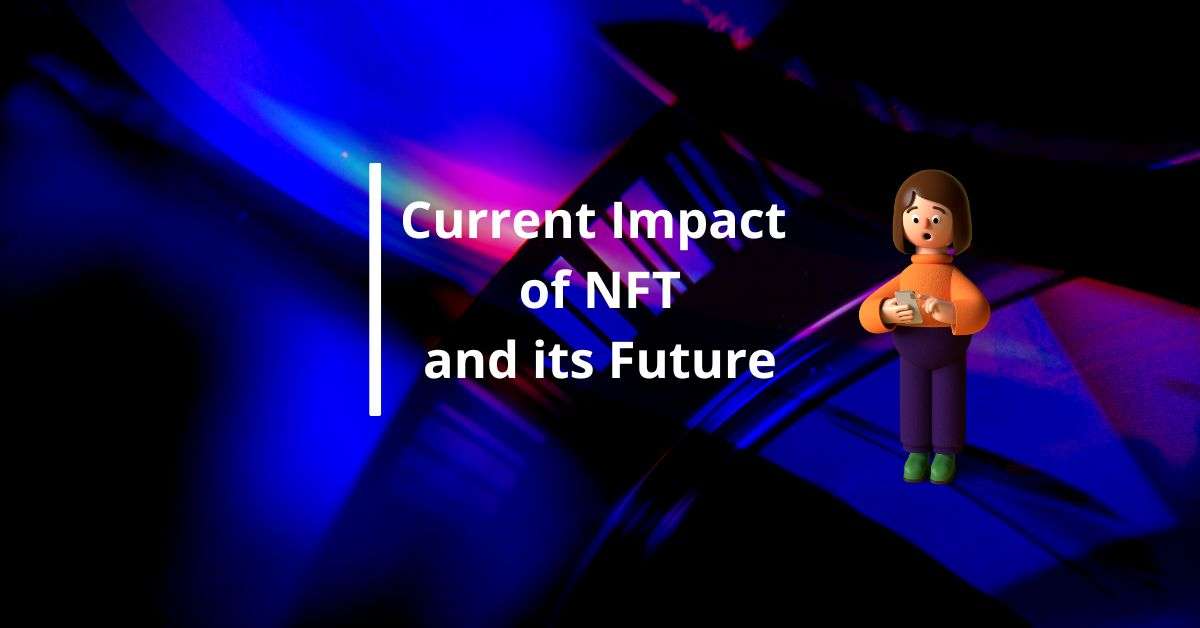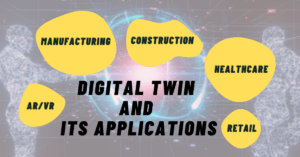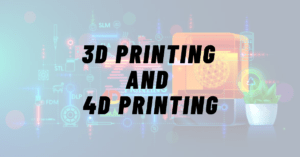NFT stands for Non-Fungible Tokens. NFTs are fungible, which means they are interchangeable like cash. Like cryptocurrencies, NFTs work on blockchain technology, which helps them verify the original creator behind a digital product.
Later in this discussion, we will also talk about the following trends that are shaping the future of NFT:
- NFT Gaming
- NFT and the Metaverse
- NFT Fragmentation
- Artificial Intelligence (AI) creating NFT
- NFT Authentication
Let’s start with a bit of an initial take.
NFT- Initial Take
The idea of NFT comes from the “colored coin” initially issued on the Bitcoin blockchain in 2012-13. The first NFT, Quantum, was created by Kevin McCoy on May 3rd, 2014. In 2015-16, it grew larger in games on the counterparty. In 2017, Larva Labs initiated unique characters on the Ethereum blockchain. This project was known as Cryptopunks.
Currently, NFT is well known in the world and has a vast market as well. Let’s start with some of the applications of NFTs.
Some Applications of NFT
NFT in Art and Digital Creatives:
Artists are widely using NFTs for the monetization of their work. You can mint images, GIFs, videos, and music into NFTs. Its unique attributes give the artist ownership right, allowing the owner to make a considerable profit.
Copying the videos and images online is possible, but the original rights remain with the legit buyer.
For example, a person named Rabono purchased a Crypto kitty for 172$. This crypto kitty goes by the name Dragon and currently costs 2,068,794$.
With the trend increasing, celebrities like Snoop Dogg and Lindsay Lohan are jumping on the NFT bandwagon, releasing unique memories, artwork, and moments as securitized NFTs.
Ticketing:
NFTs are widely used in ticketing systems today. Since NFT has distinctive digital attributes, tokenizing tickets as NFT makes sense.
For example, Coachella recently announced the release of an NFT that includes lifelong tickets, and the Mavericks are giving NFTs as tickets to home game attendees.
Today, NFTs have a wide range of applications which is expanding widely in the future. Moreover, NFTs are becoming a trend nowadays, and the projects companies sign today would have an enormous impact on the future.
Let’s dig into some of the trends that are shaping NFT’s future.
Future of NFT
1. NFT Gaming:
Hundreds of games are built entirely around NFTs due to their massive potential for the gaming industry. Games like Blankos Block Party and Axie Infinity are making waves with (P2E) models, making gamers real money. The axis in Axie infinity is NFT. With over one (1) billion$ traded on this platform, this will be a vast prospect for NFTs.
2. NFT and the Metaverse:
One anticipates NFT as a critical component of the Metaverse. Some platforms of Metaverse, like Decentraland and Sandbox, use NFTs to represent plots of virtual land and in-game items. Safety and privacy are essential in Metaverse, putting NFTs in high demand.
Many gamers and artists have created digital art projects in the meta-world due to their security and accreditation for selling in online higher trending markets at a higher price.
3. NFT Fragmentation:
Fragmentation of NFT is like shares in companies. The fragmentation technique divides an NFT into millions of pieces, making it more liquid and accessible to investors.
As original prices of NFTs are so high, for example, The infamous Doge meme costs 4 million dollars. So, the owner fractionalized the NFT into billions of pieces, allowing users to buy a stake for less than a dollar. With fragmentation, NFTs are creating their stock market, a considerable prospect.
4. AI (Artificial Intelligence) creating NFT:
Alongside blockchain, AI (Artificial Intelligence) is the next major prospect of tech. The major intersection of NFTs and AI is with an AI personality known as iNFTs. They live on the blockchain, can learn new things, and change their personality—the iNFT “Alice” sold for 500,000 dollars. In the future, iNFT could live in your Metaverse house.
5. NFT Authentication:
One can verify the individuality and authenticity of NFT with some tools. Reverse image searches and blockchain explorers are some of the NFT’s authentication tools. Its unique attributes allow verification.
Main Takeaways:
Due to the massive market of NFTs today, that is, in billions, they have an enormous impact on the current world and have a wide range of prospects in the future. It is expanding daily, and investors are investing a vast amount to increase the NFT’s uses and implementation. With its comprehensive qualities and requirements fulfilled by it for the future world, it will become a subject of utmost importance.
[This article is written by Ali Hussain during Train the Learner’s Four (4) weeks Training Program as an Article Writer]




